Contributed by Kelin Baldridge, Project Archivist for the John Rhoden papers
We recently posted a look into Richenda Rhoden’s personal style. In doing so, we noted that archives have the ability to give greater insight into the visual culture of the past and, more specifically, a realistic view of what people actually wore.

Now, I want to explore John Rhoden’s personal style. It is easy to think that men’s fashion does not change that much over time. A suit is a suit, cuts may vary, but overall it seems that men’s fashion is pretty much linear and homogeneous. However, archives show that is not true. The John Rhoden papers show how much color photography can reveal about men’s personal style from the past, and how much casual wear serves as self expression and a way of breaking out of the suits-only connotation of traditional men’s fashion.

American Academy in Rome, circa 1951-1954 
American Academy in Rome, circa 1951-1954 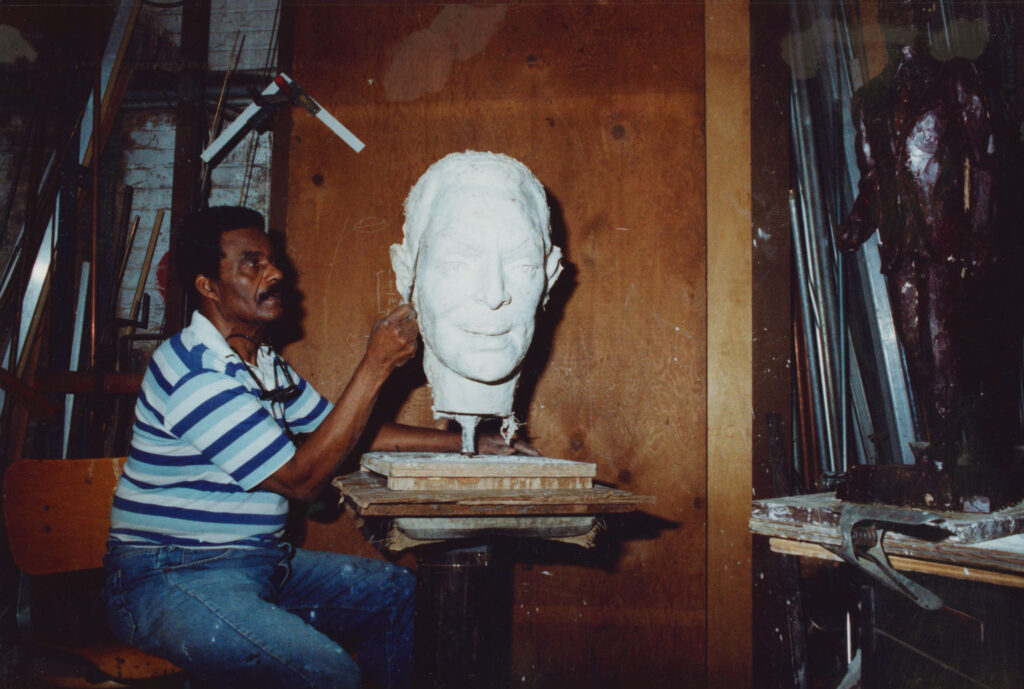
Working on the head of Reverend Fred Shuttlesworth, 1991-1992
Some of the best examples of John’s fashion come from color slides of him at work. His outfits varied greatly depending on the kind of work he was doing. Smaller-scale sculpting and clay modeling found John wearing smart casual outfits, including the traditional artist’s black turtleneck and beret and patterned collared shirts and hats. For larger scale and monumental sculpting, John wore workmen’s type outfits, such as coveralls and thick durable materials.
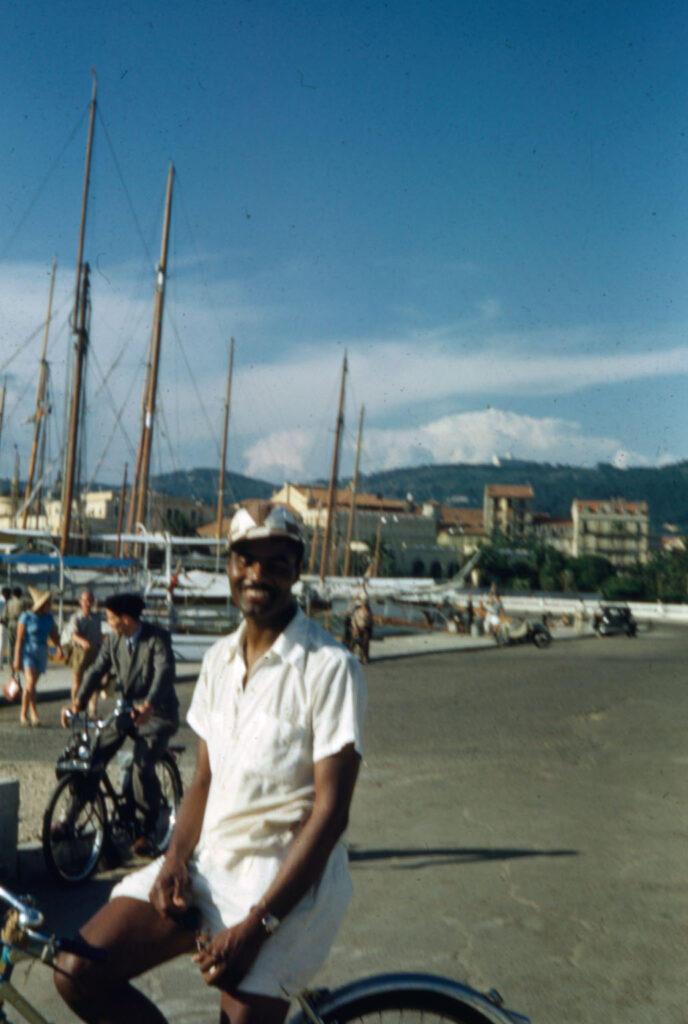
possibly France, 1952 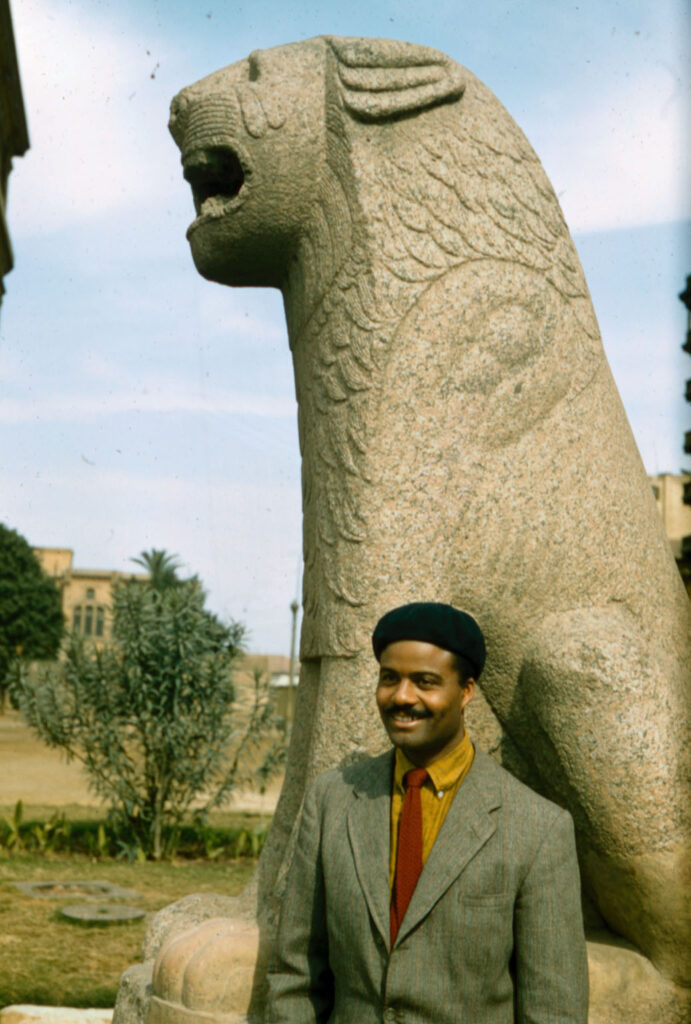
Cairo, Egypt, 1951 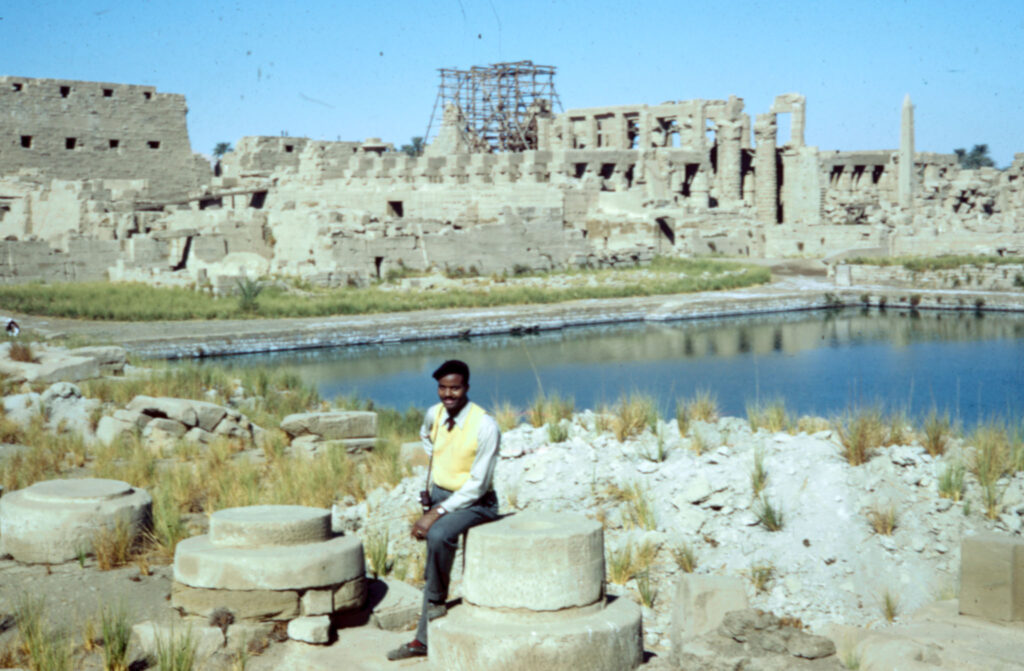
Karnak, Egypt, 1951 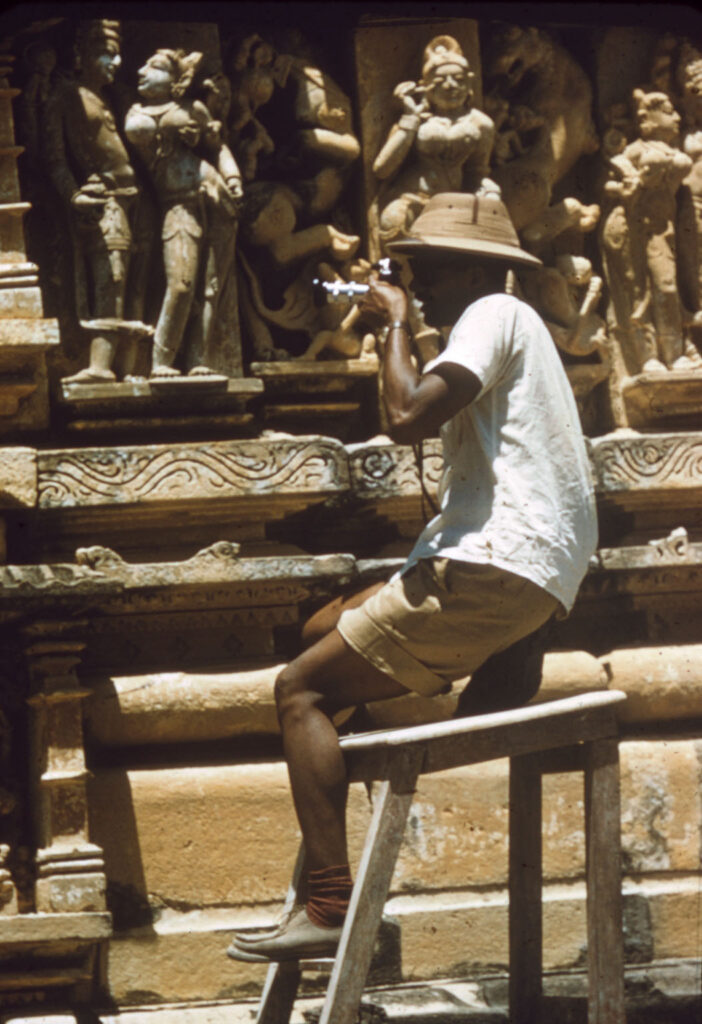
India, circa 1951-1954 
circa 1951-1959 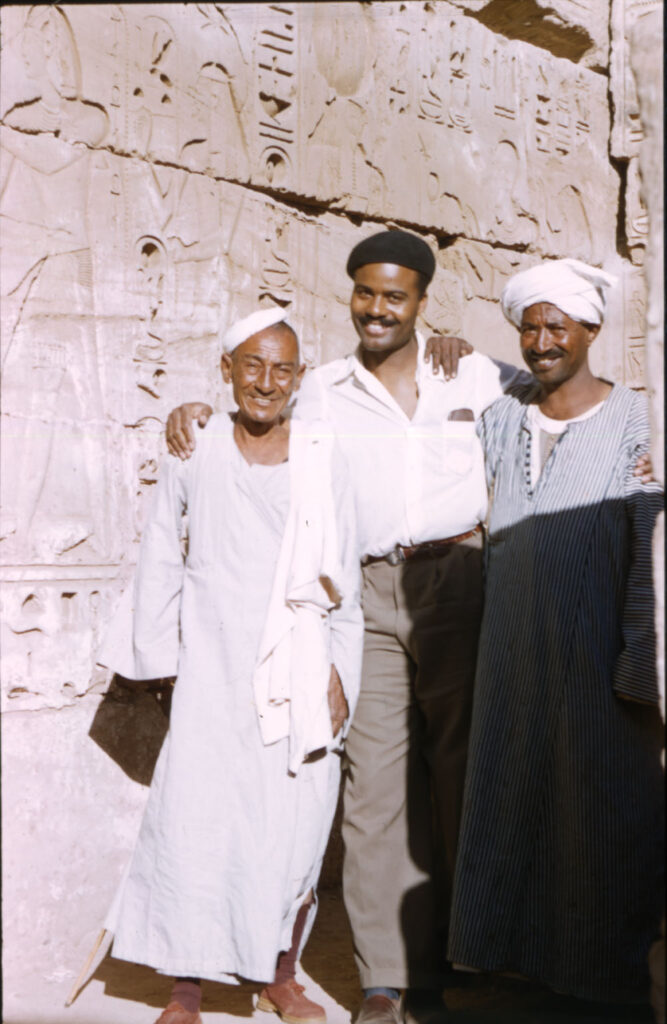
Luxor, Egypt, circa 1951
The most varied and interesting examples of John’s style come from the collection’s travel slides and photographs. He regularly wore smart suits and comfortable but polished casual wear. He also often incorporated traditional or local styles and items into his ensembles, such as a Russian Ushanka hat and an Indonesian sarong (both pictured below).
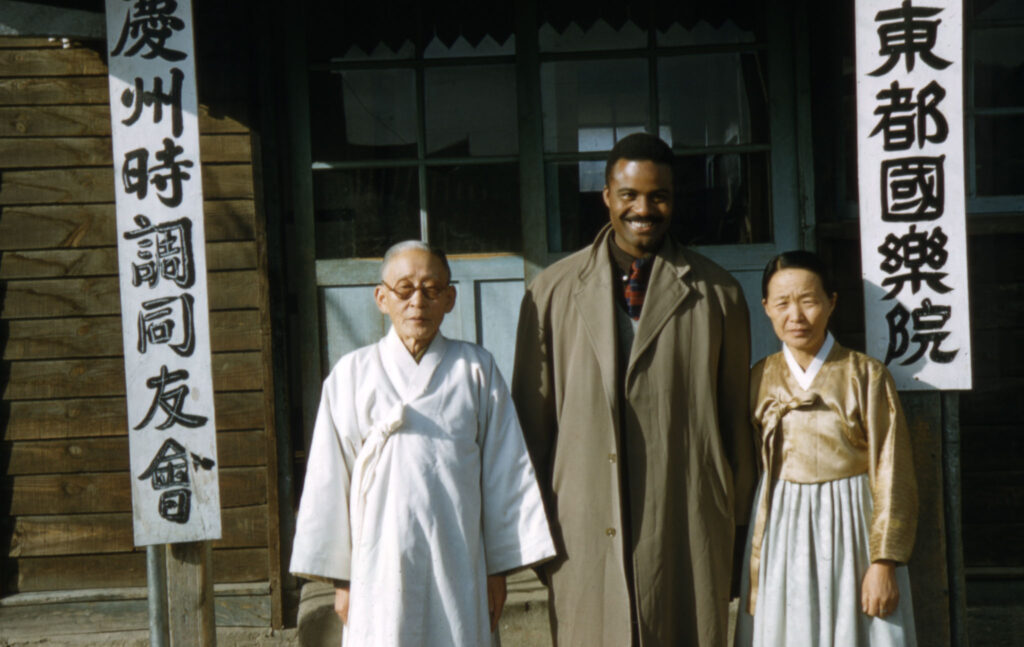
South Korea, circa 1958-1959 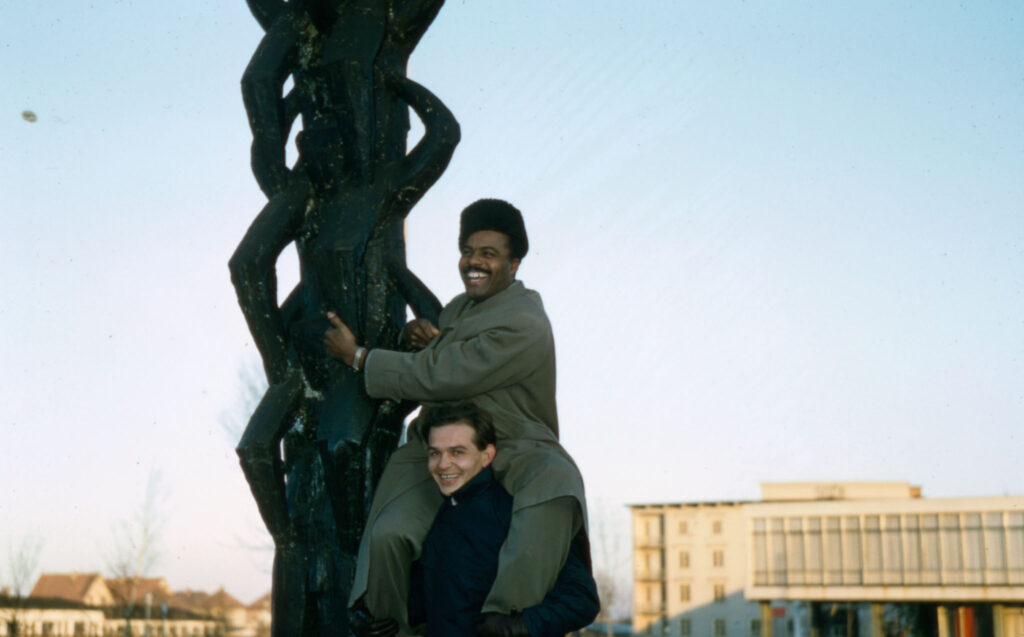
With Drago Trsar, Slovenia, circa 1958-1959 
circa 1951-1959 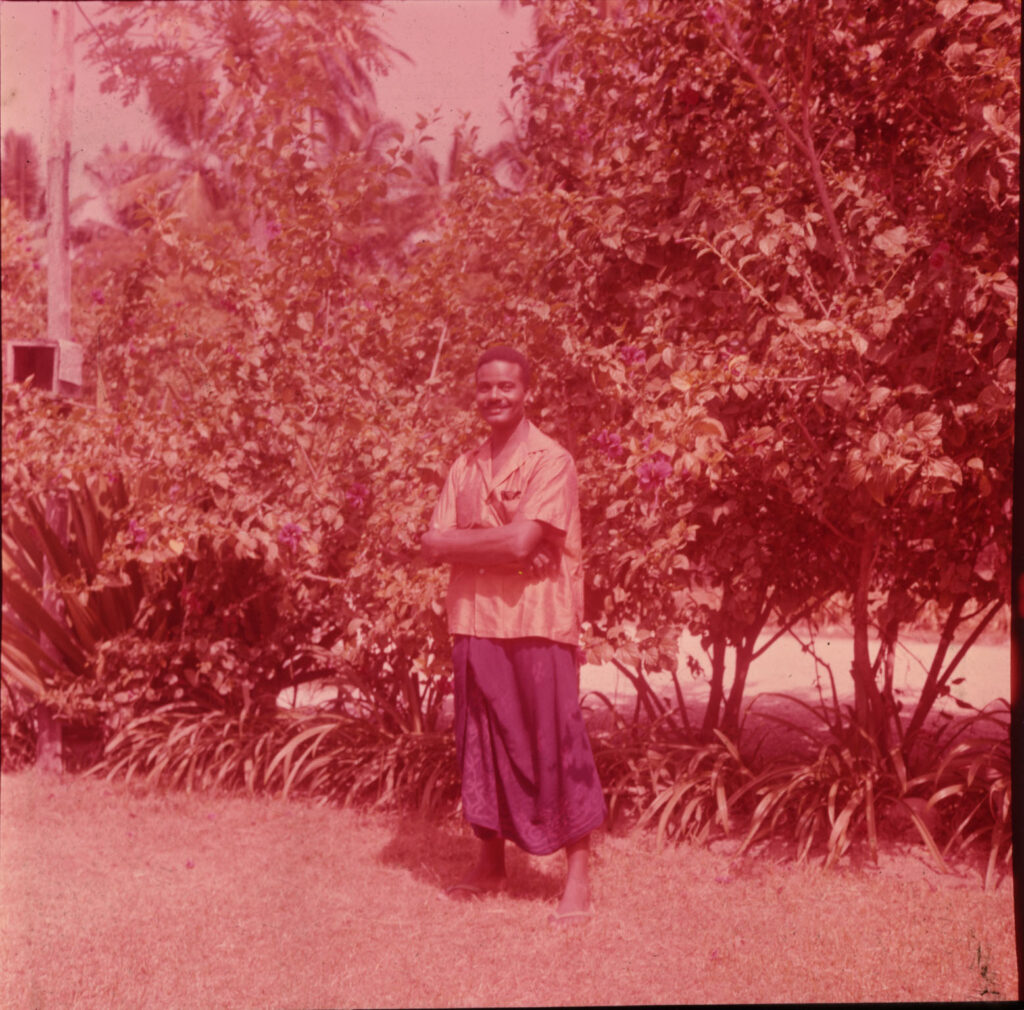
Indonesia, circa 1961-1963
The images of John’s go-to outfits for commission unveilings and events show that John seemed to have a personal uniform: he repeatedly wore checked and plaid sports coats with plain slacks, a button down or turtleneck, and occasionally sunglasses. However, his choice of uniform is an expression of personality and charisma. It’s evident that he’s unafraid to stand out in a crowd.
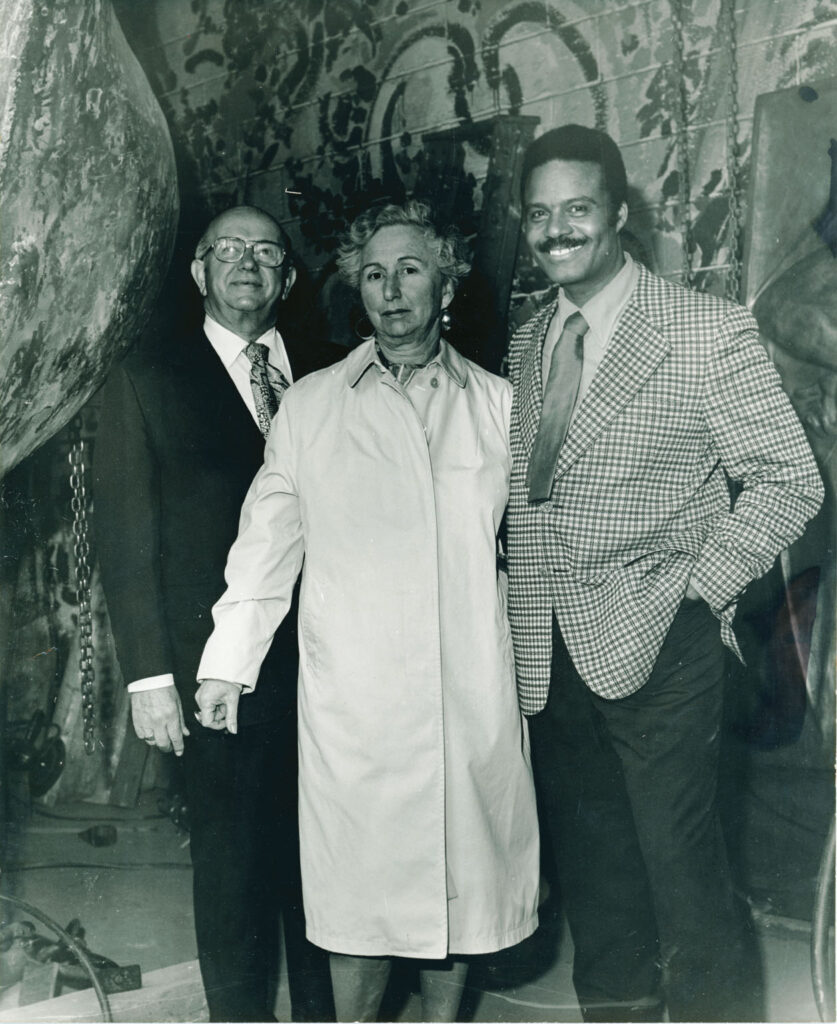
circa 1971-1974 
Philadelphia, PA, 1976 
1970s
Finally, the way John dressed at home reveals his appreciation for a put-together ensemble and comfortable but rich fabrics.

1971 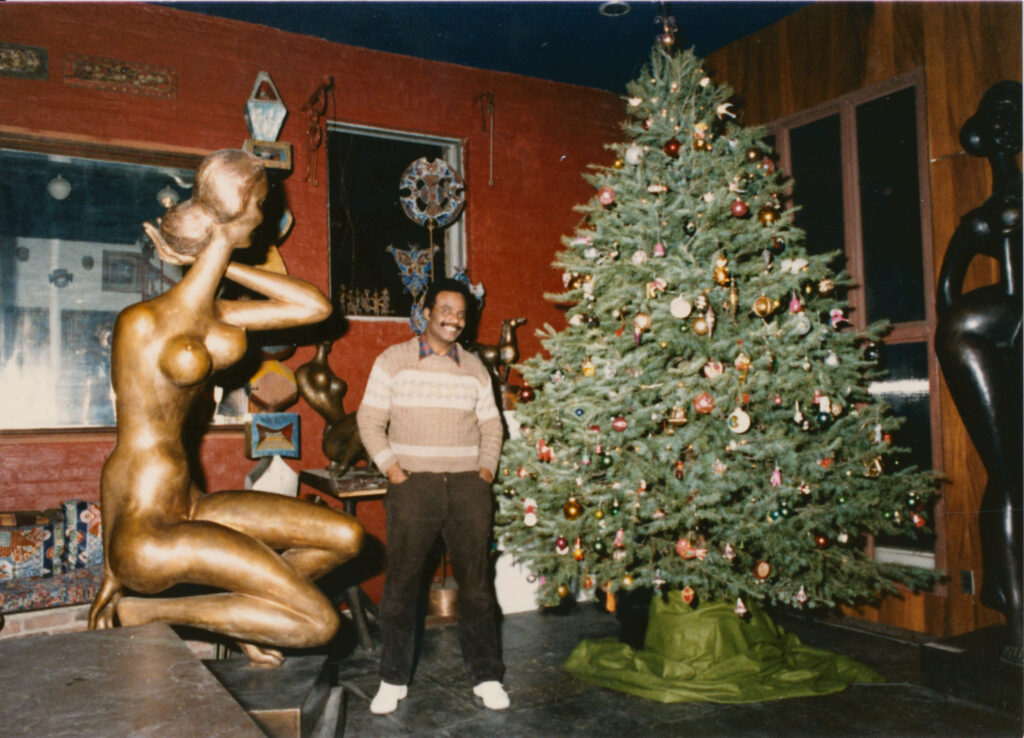
1986 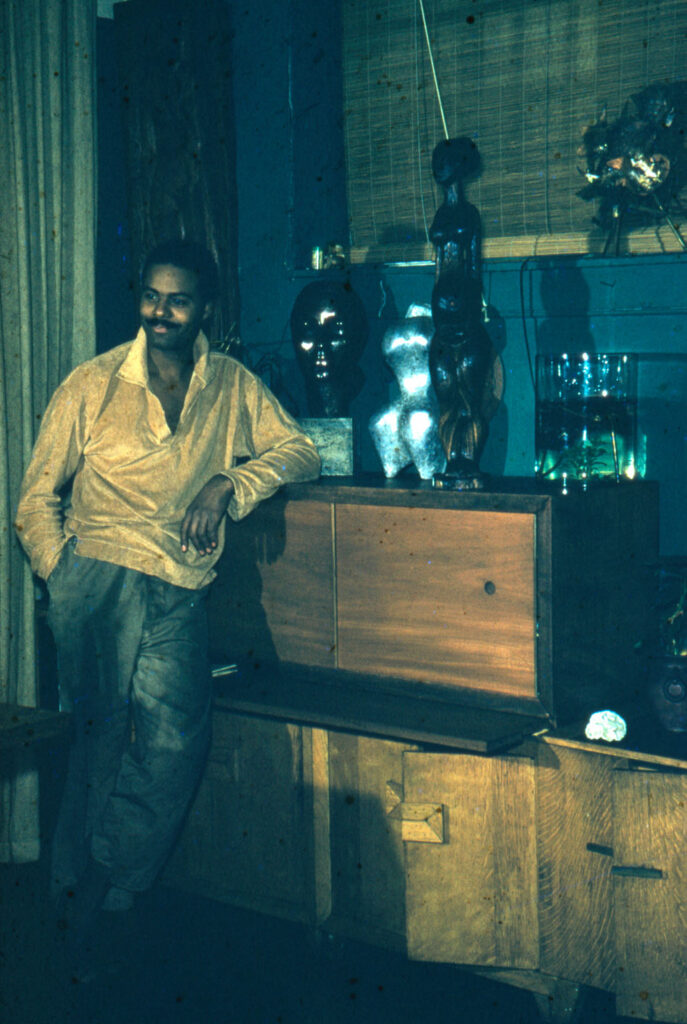
1960s-1970s
While John was not the most outlandishly dressed artist in history, the John Rhoden papers show a unique perspective on the personal style of a man in the mid and late 20th century. We see not only his put-together professional looks, but also his working attire, his loungewear, some novelty outfits, and, most importantly, the variety of looks he seemed comfortable in. It is a welcome departure from the lack of fashion diversity we are used to seeing from men of times past.
This project, Rediscovering John W. Rhoden: Processing, Cataloging, Rehousing, and Digitizing the John W. Rhoden papers, is funded in part by the National Endowment for the Humanities, a federal agency.
ABOUT THE NATIONAL ENDOWMENT FOR THE HUMANITIES
Created in 1965 as an independent federal agency, the National Endowment for the Humanities supports research and learning in history, literature, philosophy, and other areas of the humanities by funding selected, peer-reviewed proposals from around the nation. Additional information about the National Endowment for the Humanities and its grant programs is available at: www.neh.gov.